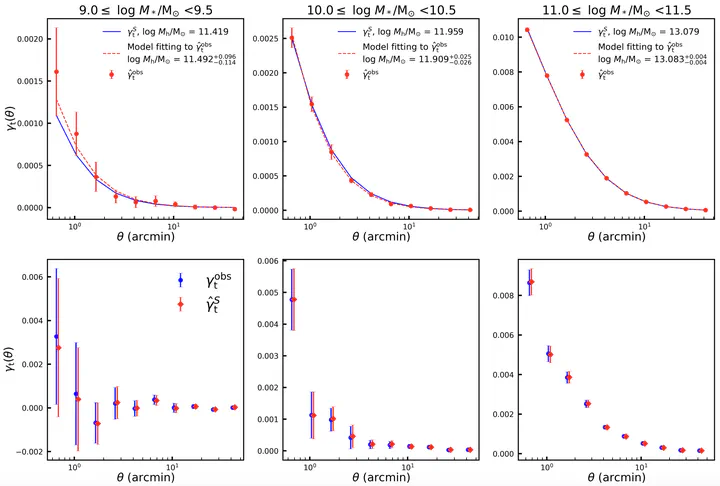Point spread function errors for weak lensing – density cross-correlations: Application to UNIONS
Oct 30, 2024· ,,,,,,,,,,·
0 min read
,,,,,,,,,,·
0 min read
张子文
Martin Kilbinger
Fabian Hervas Peters
Qinxun Li
Wentao Luo
Lucie Baumont
Jean-Charles Cuillandre
Sébastien Fabbro
Stephen Gwyn
Alan McConnachie
Anna Wittje
 Image credit: Ziwen Zhang
Image credit: Ziwen ZhangAbstract
Aims:Calibrating the point spread function (PSF) is a fundamental part of weak gravitational lensing analyses. Even with corrected galaxy images, imperfect calibrations can introduce biases. We propose an analytical framework for quantifying PSF-induced systematics as diagnostics for cross-correlation measurements of weak lensing with density tracers, e.g., galaxy-galaxy lensing. We show how those systematics propagate to physical parameters of the density tracers. Those diagnostics only require a shape catalogue of PSF stars and foreground galaxy positions. Methods:We consider the PSF-induced multiplicative bias, and introduce three second-order statistics as additive biases. We compute both biases for the weak-lensing derived halo mass of spectroscopic foreground galaxy samples, in particular, their effect on the tangential shear and fitted halo mass as a function of stellar mass. In addition, we assess their impact on the recently published black-hole - halo-mass relation for type I Active Galactic Nuclei (AGNs). Results:Using weak-lensing catalogues from the Ultraviolet Near Infrared Optical Northern Survey (UNIONS) and Dark Energy Survey (DES), we find the multiplicative biases in the tangential shear to be less than 0.5%. No correlations between additive bias and galaxy properties of the foreground sample are detected. The combined PSF systematics affect low-mass galaxies and small angular scales; halo mass estimates can be biased by up to 18% for a sample of central galaxies in the stellar mass range 9.0 ≤ log M∗/M⊙ < 9.5. Conclusions:The PSF-induced multiplicative bias is a subdominant contribution to current studies of weak-lensing - density cross-correlations, but might become significant for upcoming Stage-VI surveys. For samples with a low tangential shear, additive PSF systematics can induce a significant bias on derived properties such as halo mass.
Type
Publication
A&A